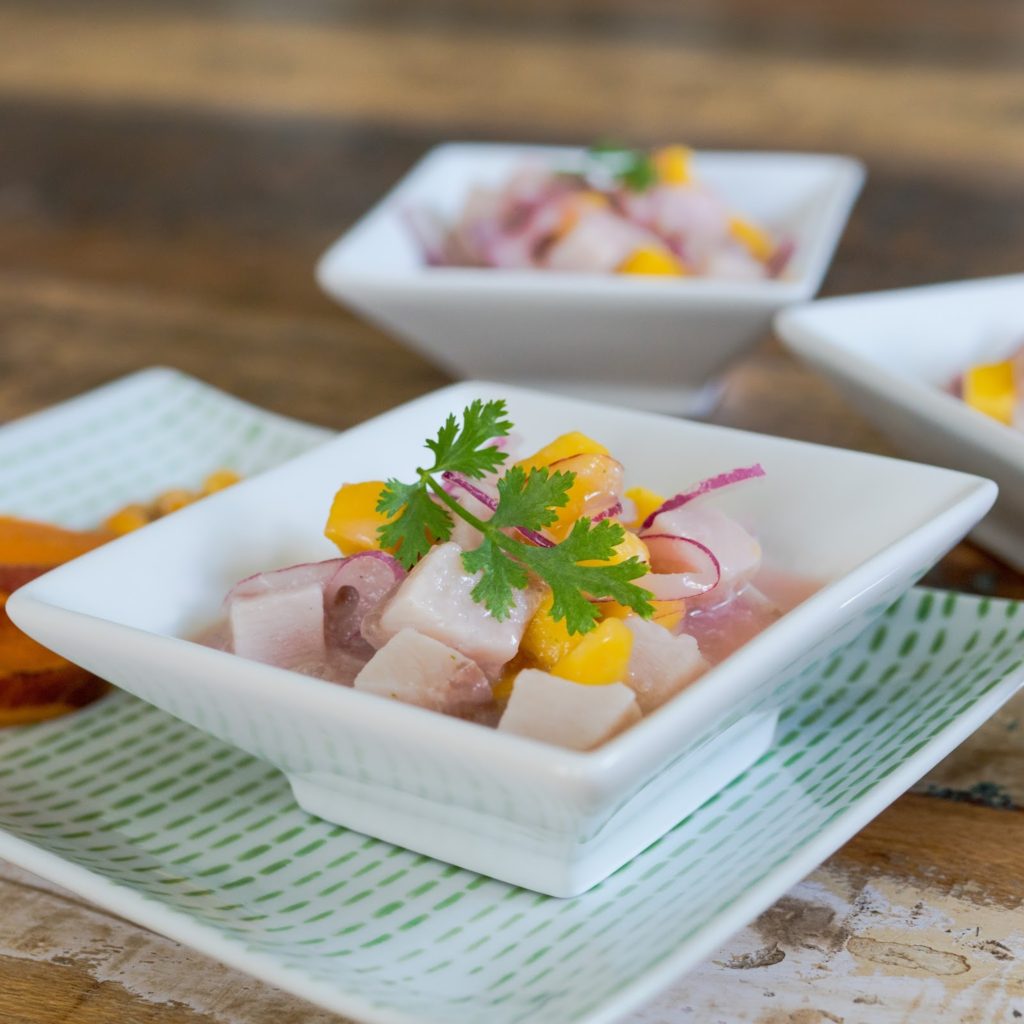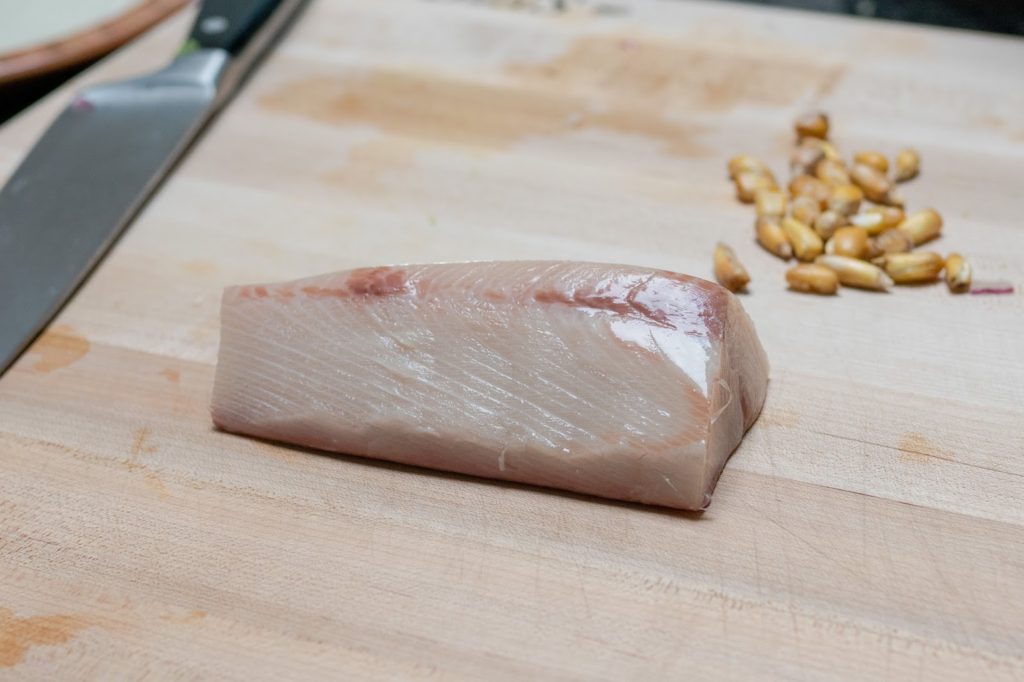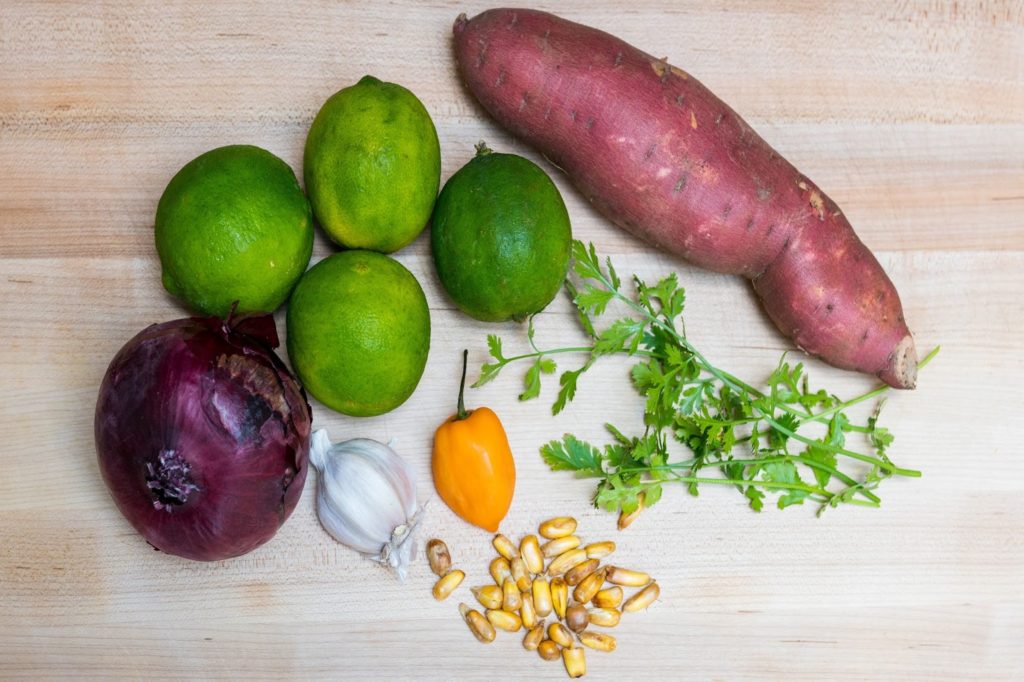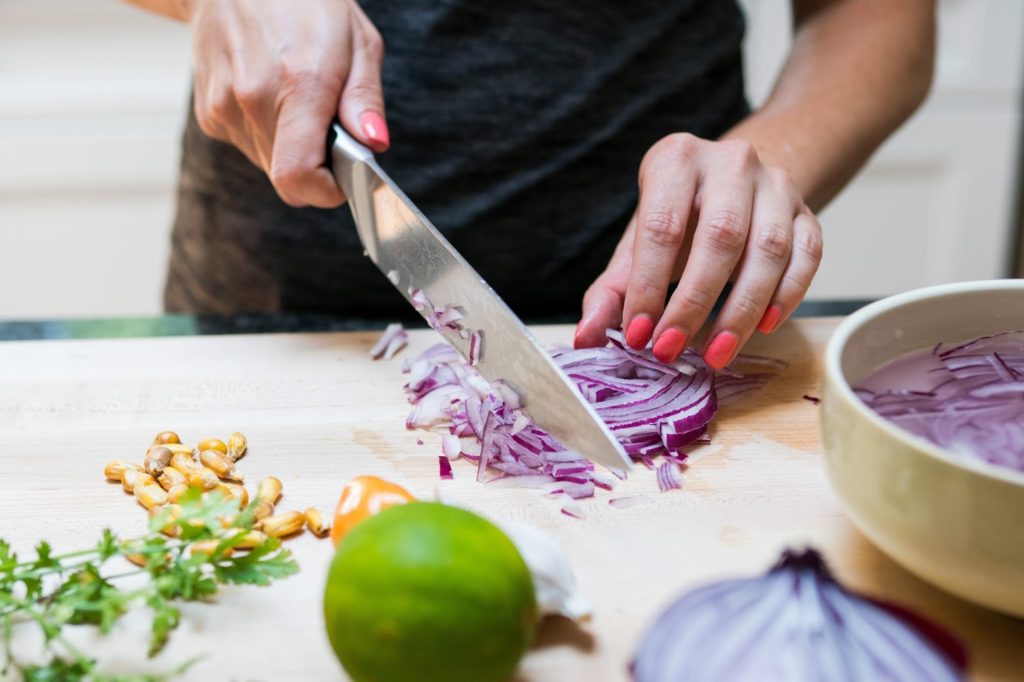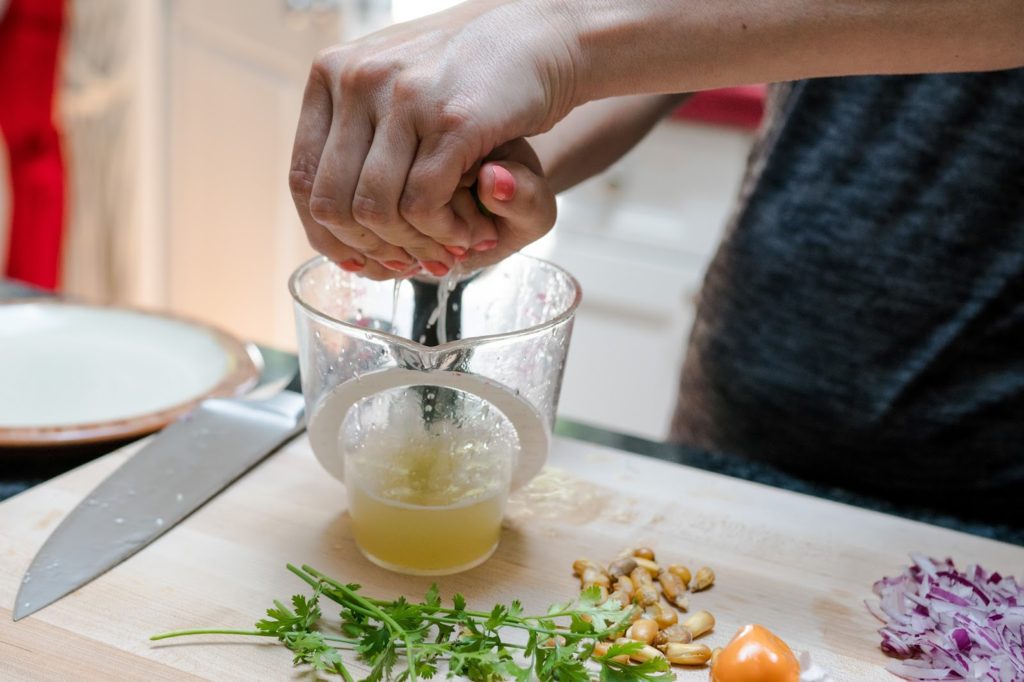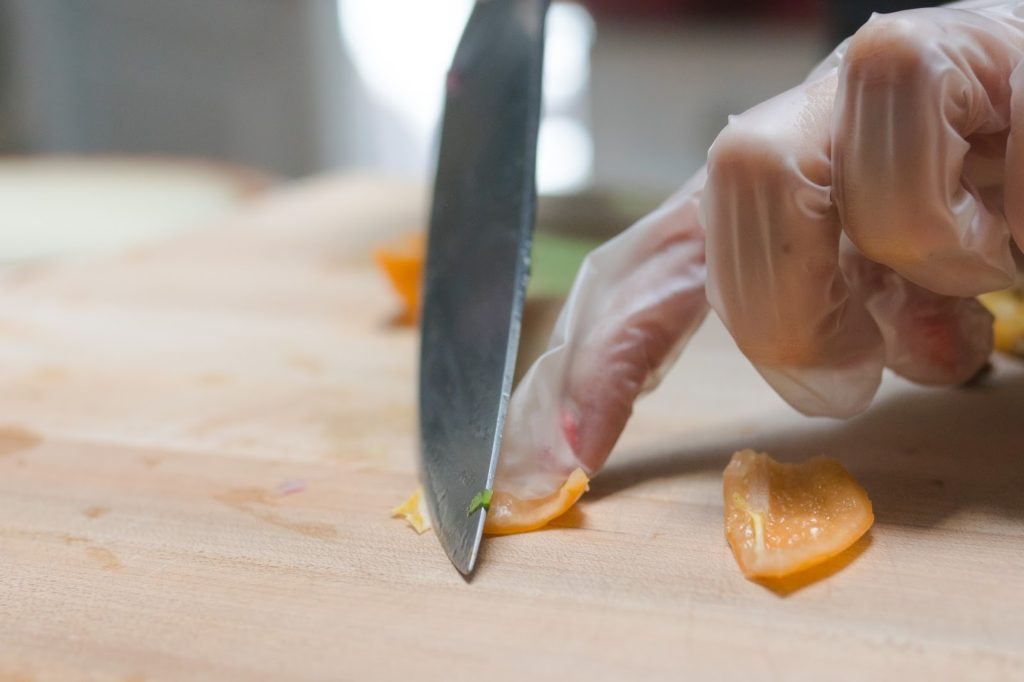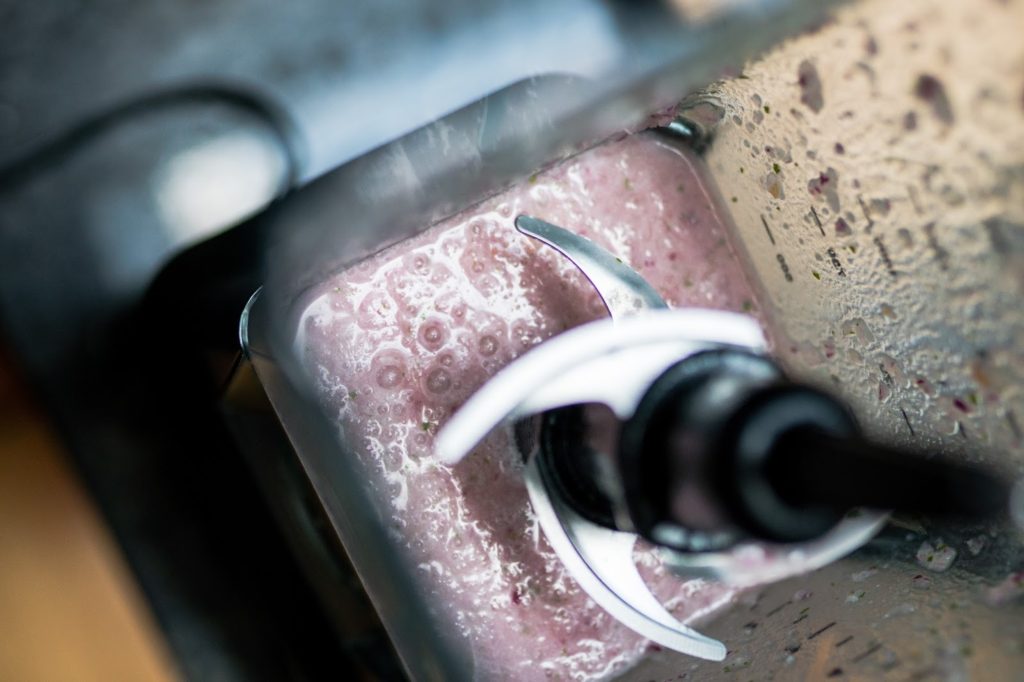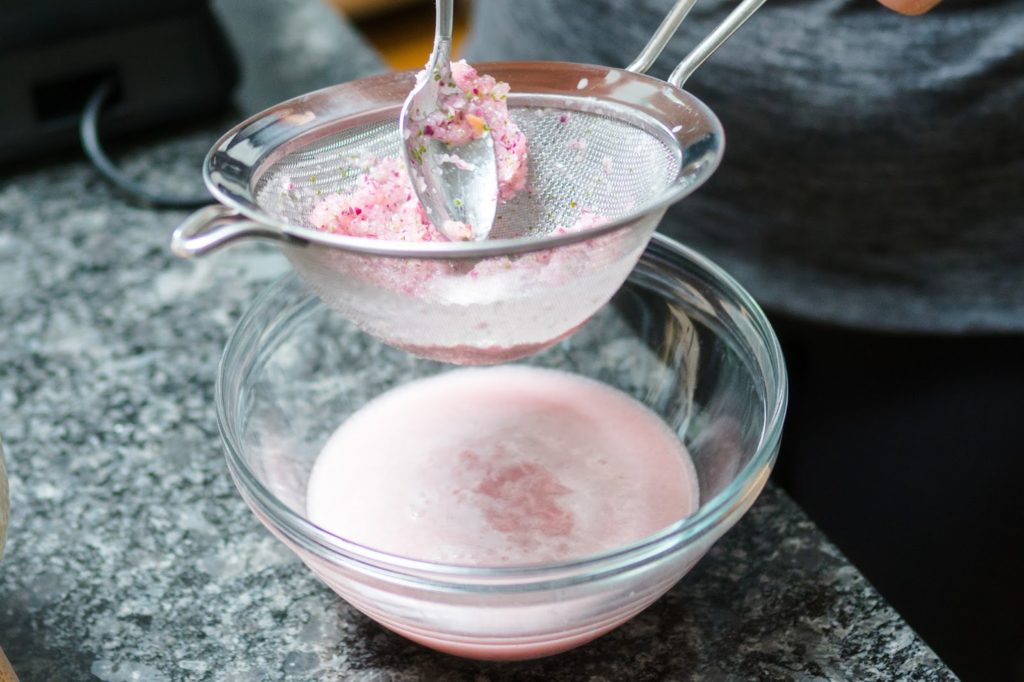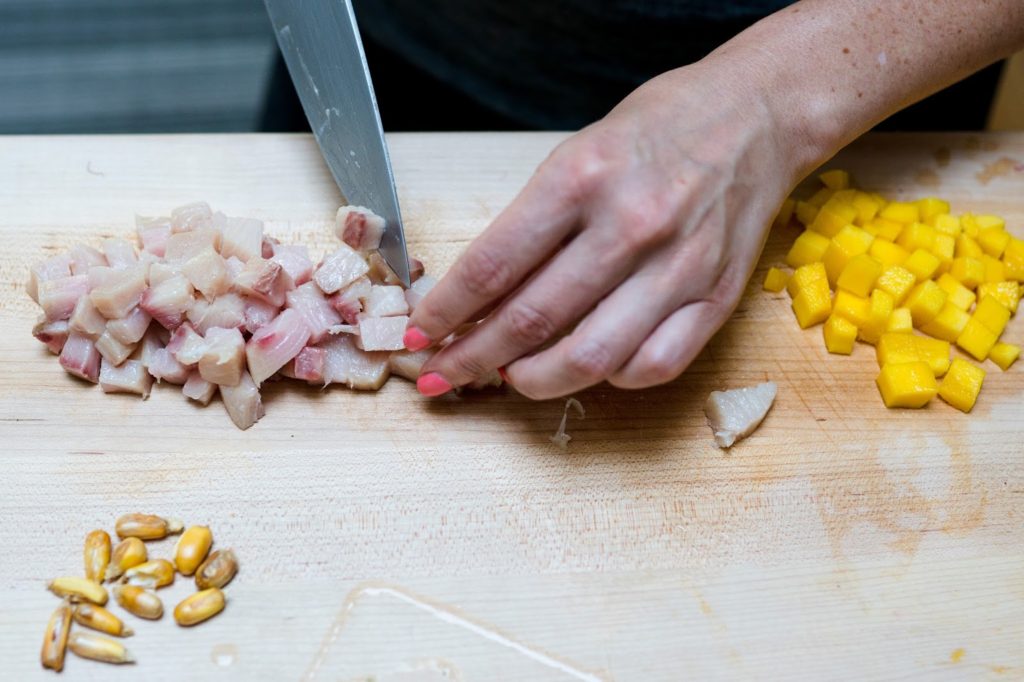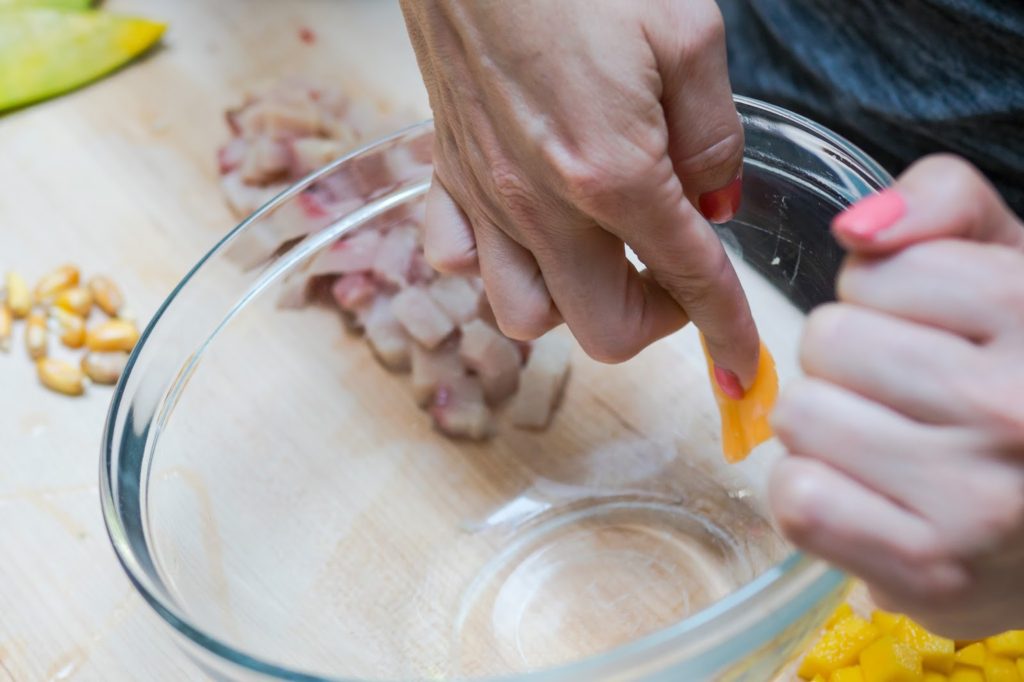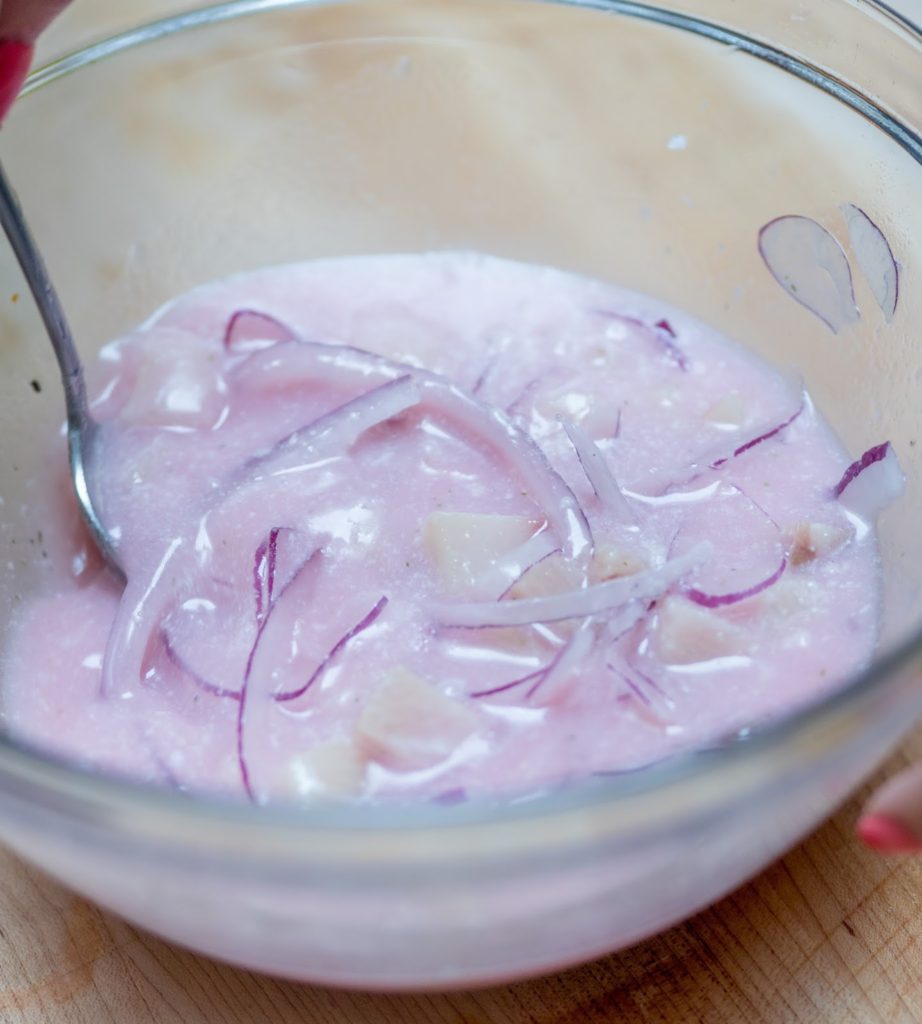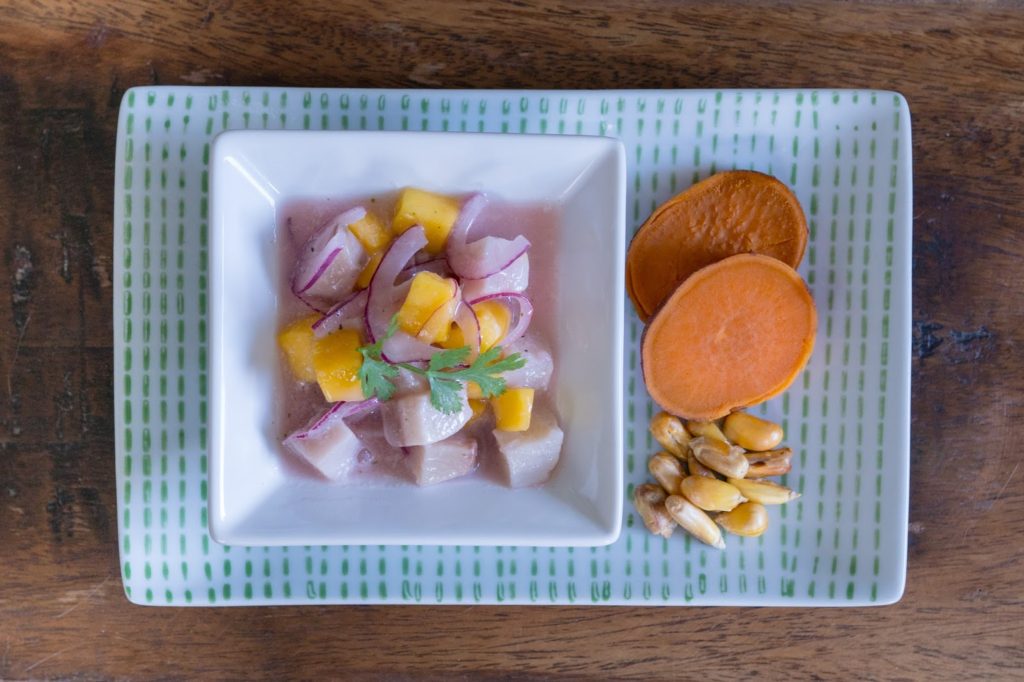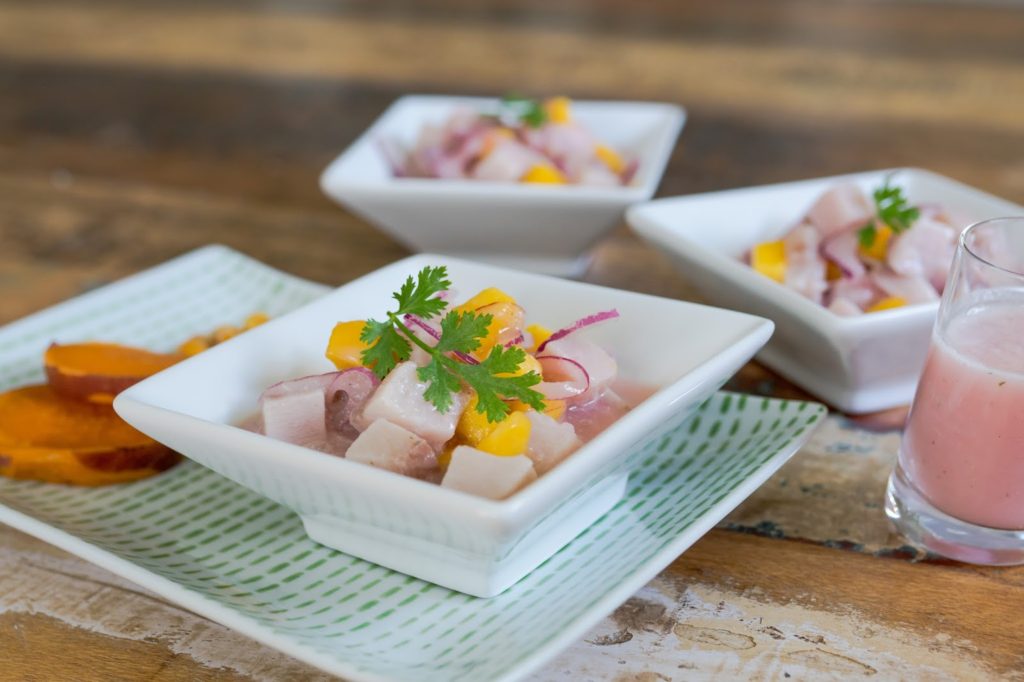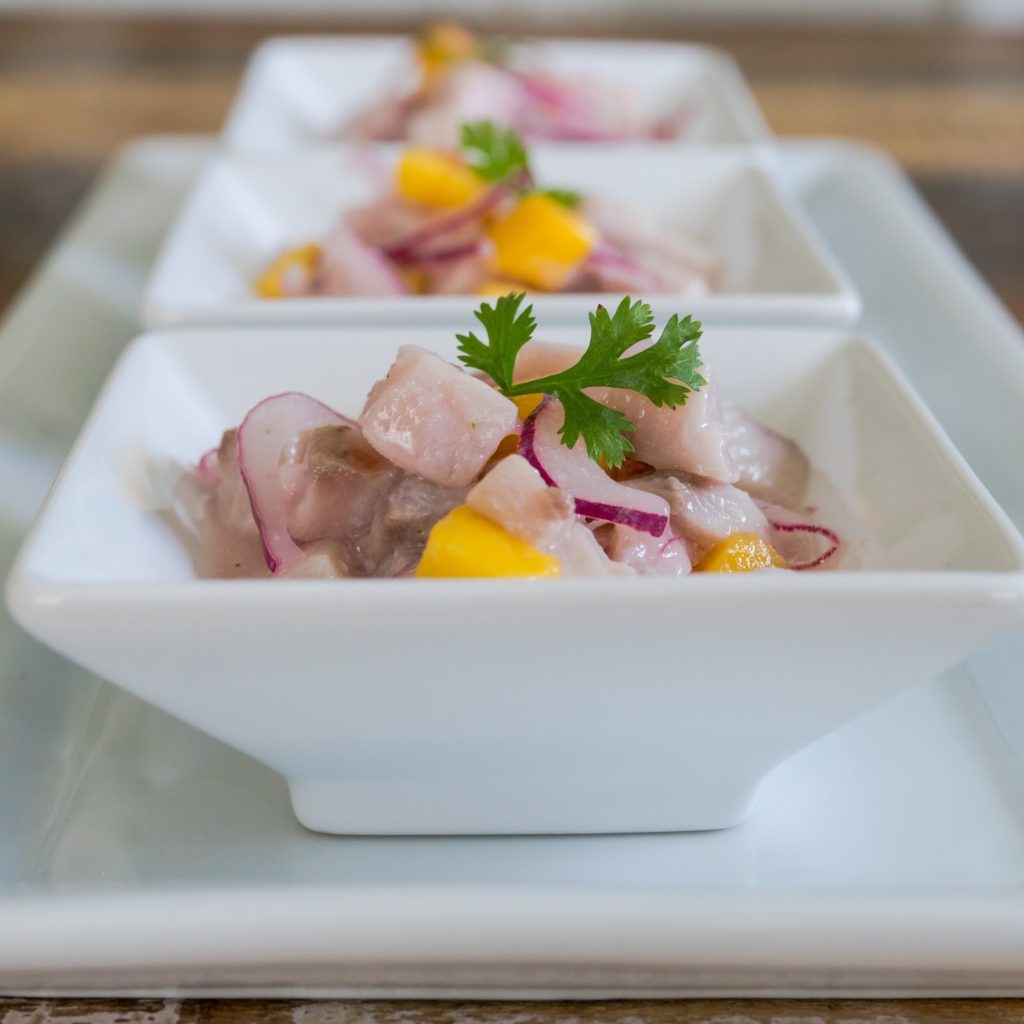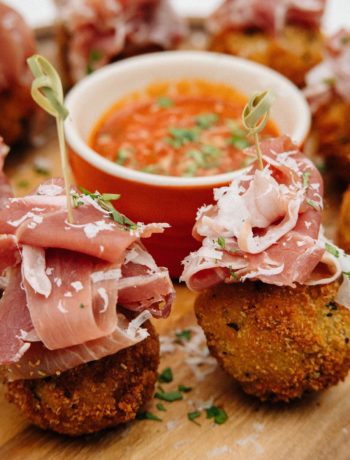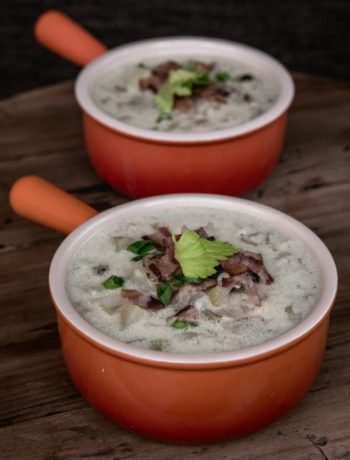For those of you who follow me on instagram, you already know that I had the amazing opportunity to visit Peru earlier this summer. (For those who don’t, I will be posting an in-depth recap soon!)
While there, my friends and I spent a couple of days in Lima, where I had undoubtedly the best ceviche of my life. (Fitting, considering it was the Peruvians who basically invented it.) We also had a chance to make some of our own in a class during our trip, so I knew I wanted to create a version to share on the blog.
Traditionally, it’s made with a white fish such as sea bass, sole, or mahi, and often a mix of other fish such as octopus or shrimp. Since I was coming up on the letter “Y,” I decided that Yellowtail would be a perfect canvas for this delightfully fresh dish.
When you are making something that includes raw fish such as sushi or ceviche, it’s very important you select the freshest, highest quality fish available. I first tried Whole Foods, but they do not carry Yellowtail. Fortunately, we have a little Japanese market right across from Whole Foods here in West Hartford, so I walked over there and found exactly what I was looking for. About 5 ounces of sashimi-grade Yellowtail.
As for the rest of the ingredients… you will need plenty of fresh lime juice (key limes are the best for this recipe, but I couldn’t find any), red onion, garlic, cilantro, and a spicy pepper. In Peru, they use a Lima or Rocoto pepper. Unfortunately, these are not generally available in the United States. Our ceviche instructor said you could substitute with a Manzana pepper (which I also could not locate.) So I instead resorted to using a habanero. Of course, habaneros are much spicier than those other peppers I mentioned, so you must use them extremely sparingly. You could also try a jalapeño, but the habanero has a slight hint of fruitiness that better matches the peppers used in Peru.
If you would like a traditional garnish, you can also serve your ceviche with slices of boiled sweet potato and “cancha”… which are these delicious crunchy roasted corn kernels found everywhere in Peru. I actually brought these home from my trip, but you might be able to find them in a Latin market. Ceviche is often served with boiled Andean corn as well (much bigger and starchier kernels than the corn we have here), but I decided to omit altogether since it’s just not the same as corn available in the U.S.
In addition to the raw fish, you will also be using raw red onions in this dish. To avoid overpowering the fish with the strong onion flavor, you can slice them extremely thin and place in a bowl of water for 10 minutes before using.
In Peru, the key to ceviche is something called “Leche de Tigre.” Obviously, this is not actually milk of a tiger, but instead, it’s the flavorful juices used to marinate the fish. It is often served alongside the ceviche or sometimes on its own, as it’s said to be an aphrodisiac and a hangover cure. It contains citrus, onion, fresh chile, salt and some of the juices from the fish.
These days, ceviche chefs only marinate the fish for about 3 minutes before serving, as opposed to several hours. For this reason, we have to sort of manufacture the tiger’s milk by creating these flavors ahead of time. As our ceviche instructor taught us, the ceviche must be “lime-y, salty and spicy,” and we begin building those layers of flavor in the leche de tigre.
I used about 4 limes for this recipe to get about 1/2 cup of fresh lime juice. It’s important not to over-squeeze the limes because you don’t want that bitter white pith to affect the taste of the marinade. As I mentioned above, key limes are ideal for this recipe (not as acidic), but I could not find any so I substituted with regular limes.
As I mentioned, habaneros are very spicy, so you will only need to buy one (and you likely won’t use the entire thing.) If your skin is sensitive or you are worried about accidentally touching your eyes, I recommend wearing gloves. Remove the stem, cut in half lengthwise and remove seeds. Cut in half again so that you have 4 quarters.
To make the Leche de Tigre, you will blend together the lime juice, some cilantro, garlic, ice cubes, 1 ounce of the raw fish, and one quarter of the habanero. I ended up adding two quarters (so half of the pepper), but I would recommend starting with one to test the heat levels. You will also add some of the red onion in and just pulse a couple times before straining.
Full disclosure: I forgot about the “pulse a couple of times” instruction for the onions, so that’s why my leche looks a little more pink than normal. You also need to season with kosher salt. (Remember, it must be: lime-y, spicy and salty.)
Next, strain the solids out, by setting a fine mesh sieve over a bowl and pouring in the contents of the blender, pressing down with a spoon to extract as much of the liquid as possible. My boyfriend (and amazing photographer), Justin, actually ate the leftover solids (we kept calling it a fish relish), so try it out and keep it for another use if you’d like. (He ate it plain, but we thought it might make a nice topping for grilled fish.)
Chop up your fish into uniform pieces. I prefer my ceviche on the smaller side, so I did somewhere just over 1/4″ inch. (However, 1/2″ is probably more traditional.) For a little color and a pop of sweetness, I also decided to add a little chopped mango to my ceviche (also not traditional). If you decide to do this, I cut them in the same size cubes as the fish. (It wasn’t until after that I realized I also had used mango in a tuna tartare recipe a few years back, so apparently I like my raw fish with mango. What can I say? It’s a great combo!)
With two of the remaining quarters of habanero, you will “perfume” the bowl. Basically, just rub the cut side of the chile on the bowl. Add the fish, and gently toss it around the prepped bowl.
To the bowl of Yellowtail, add more sliced onion and the Leche de Tigre. Gently stir a couple times (as our instructor said: with love) and allow to marinate for just about 3 minutes. (It really doesn’t need much longer than this if you are using high quality, fresh fish.) Right at the end, fold in the fresh mangoes.
To serve, you can garnish with cilantro and additional onion slices, along with some boiled sweet potato and cancha (if you can find it.)
Using a slotted spoon, divide the ceviche among bowls, and pour some of the Leche de Tigre over the top. If desired, you can serve some of it on the side in a shot glass.
This recipe was a combo of the techniques we learned in our ceviche class, my own personal twists, and a recipe from Gaston Acurio published in Bon Apetit (we ate at one of his recipes in Lima, where we had that awesome ceviche.) I hope you enjoy it!

document.write(”);
For the Leche de Tigre:
- 1/2 cup fresh key lime juice (can substitute with regular limes)
- 2 garlic cloves, smashed
- 1 tablespoon packed, chopped fresh cilantro
- 1/4 of a habanero chile pepper, seeded and halved lengthwise (can add up to another quarter if more heat is desired)
- 1 ounce fresh Yellowtail, roughly cubed (can substitute with mahi, sea bass or sole)
- 4 ice cubes
- 1/2 cup chopped red onion
- kosher salt and freshly cracked black pepper, to taste
For the ceviche:
- 1/2 of a red onion, thinly sliced
- 1/2 of a habanero chile pepper, seeded and halved lengthwise
- 4 ounces of Yellowtail, cut into 1/4″ to 1/2″ cubes (can substitute with mahi, sea bass or sole)
- Leche de Tigre (recipe above)
- 1 mango, cut into same size cubes as fish
- Kosher salt
- fresh cilantro sprigs (for garnish)
- 1/2 of a small sweet potato, boiled/cooled and sliced (for accompaniment)
- cancha (for accompaniment)
For Leche de Tigre:
- Combine first six ingredients in a blender and purée until smooth. Add red onion and pulse 3-4 times. Season to taste with kosher salt.
- Set a fine-mesh sieve over a small bowl. Strain mixture to remove solids. Refrigerate until ready to use.
For the Ceviche:
- Place thinly sliced red onion into a bowl of water for ten minutes.
- Meanwhile, rub a large bowl with cut sides of habanero and discard. Place Yellowtail, all but a few slices of the onion & leche de tigre in bowl and gently stir. Let marinate for 3 minutes. Fold in mango and season to taste with salt.
- Using a slotted spoon, divide ceviche into small bowls. Drizzle with Leche de Tigre from bowl and garnish with remaining onion, & cilantro. Serve alongside sweet potato slices and cancha.

